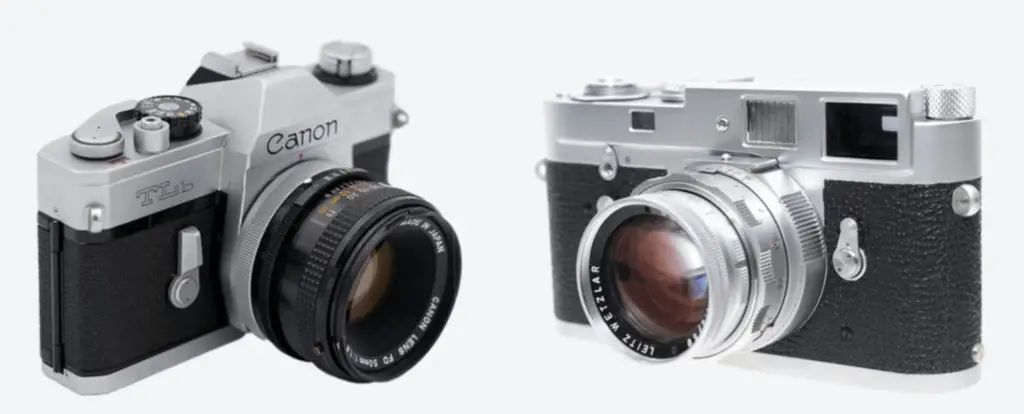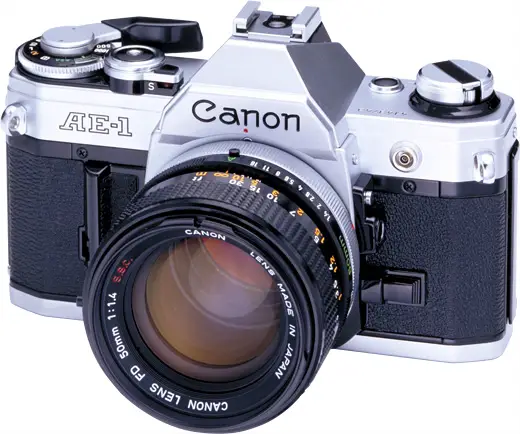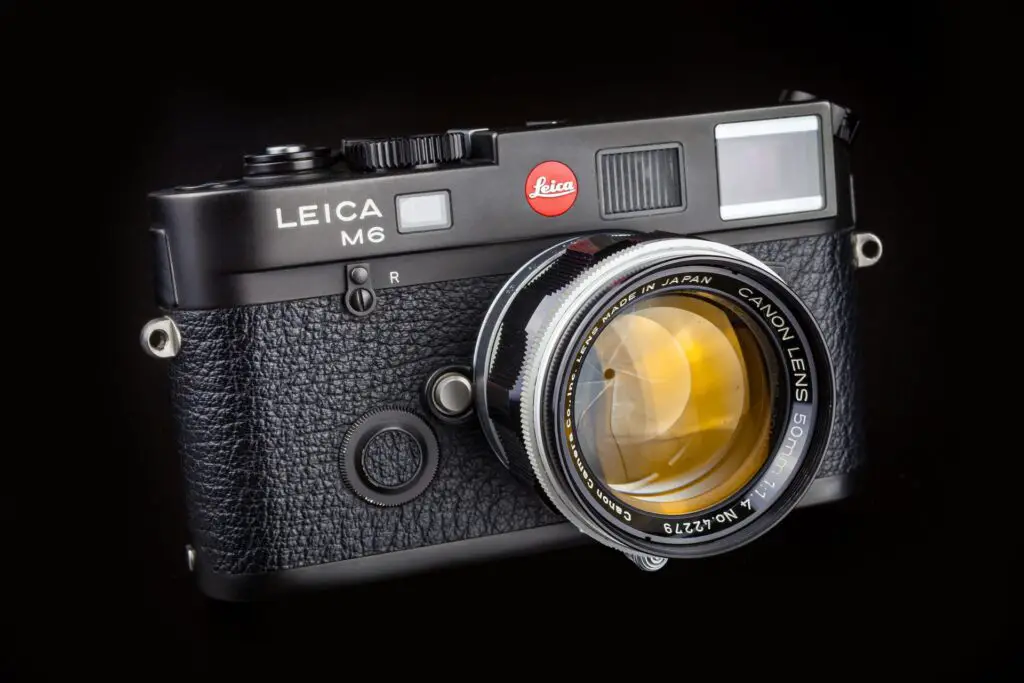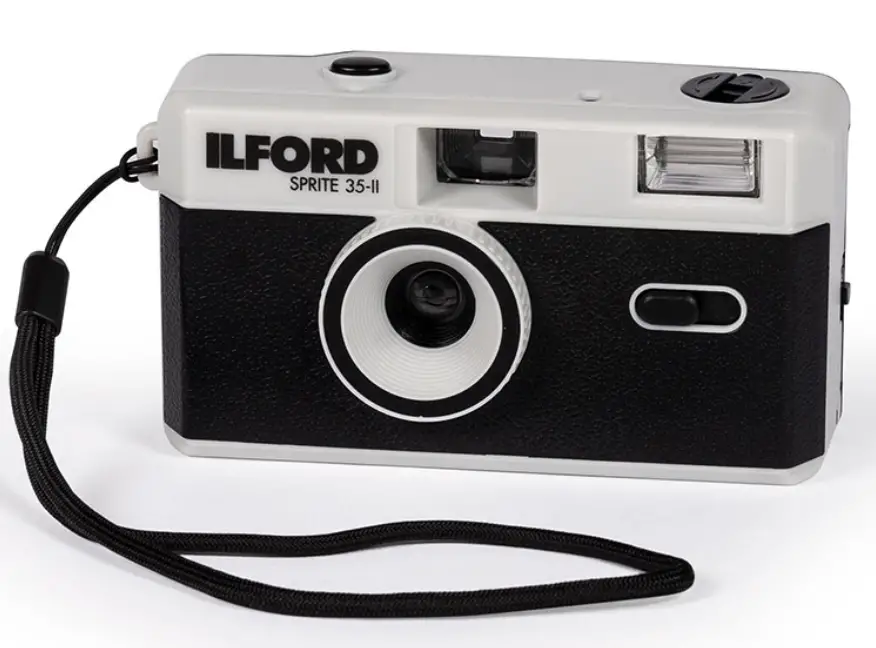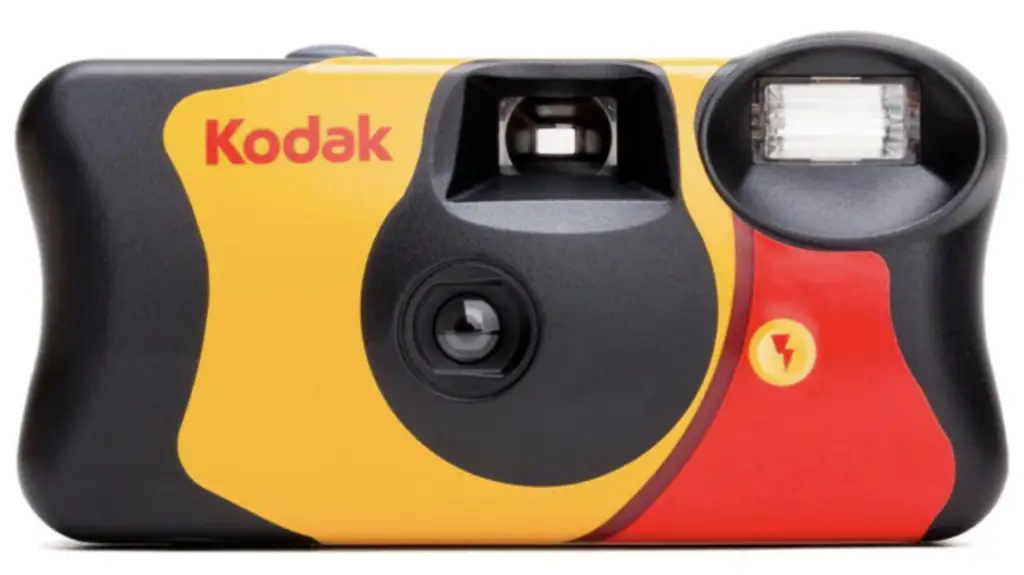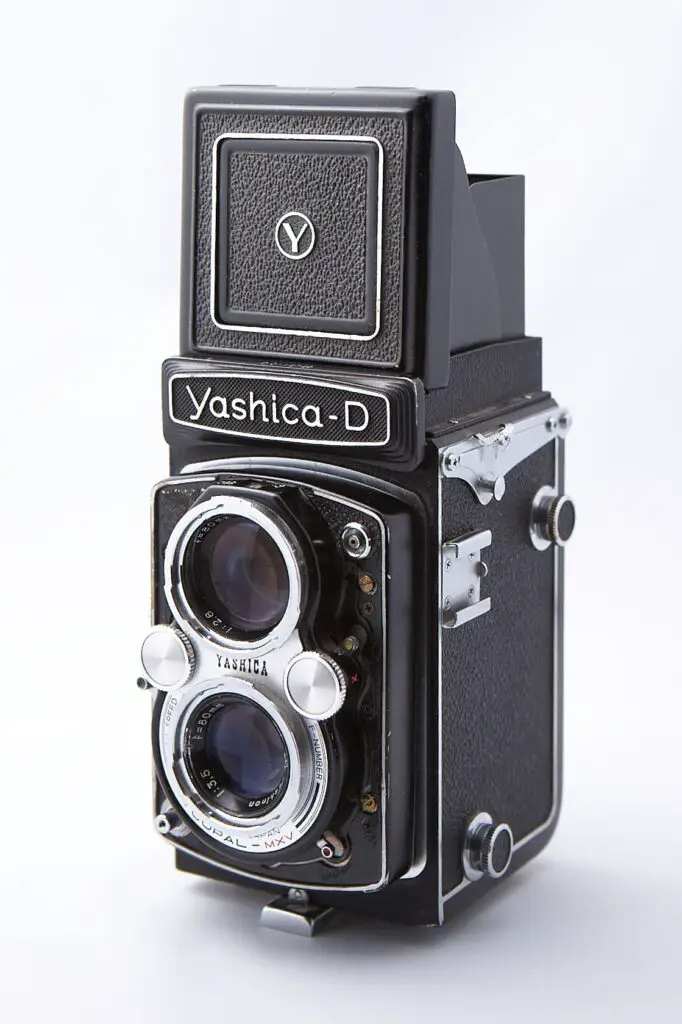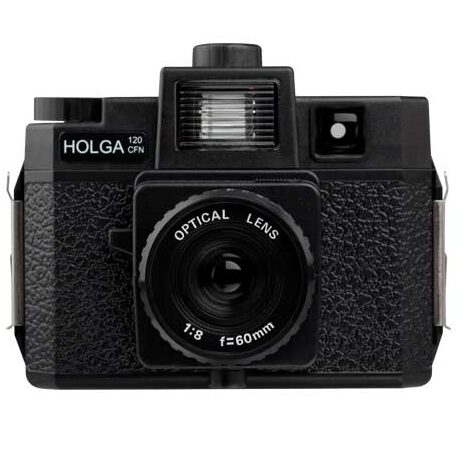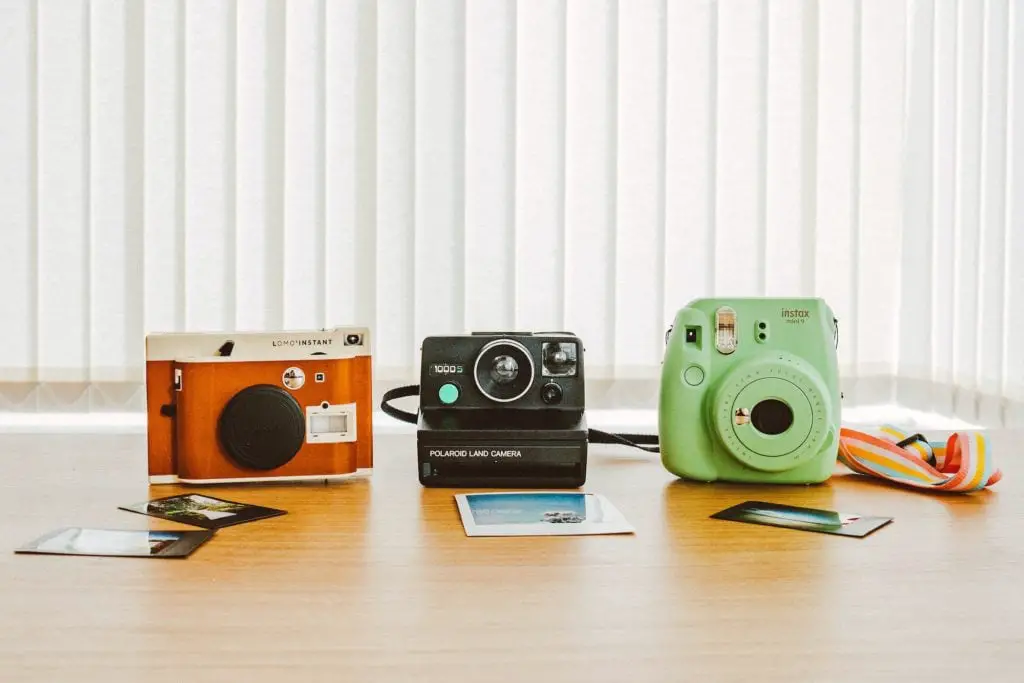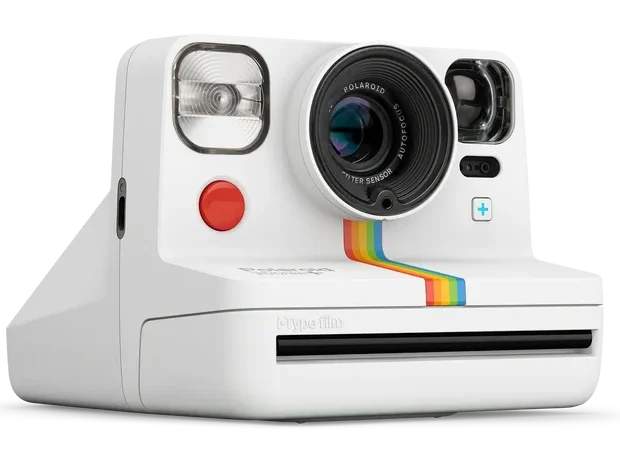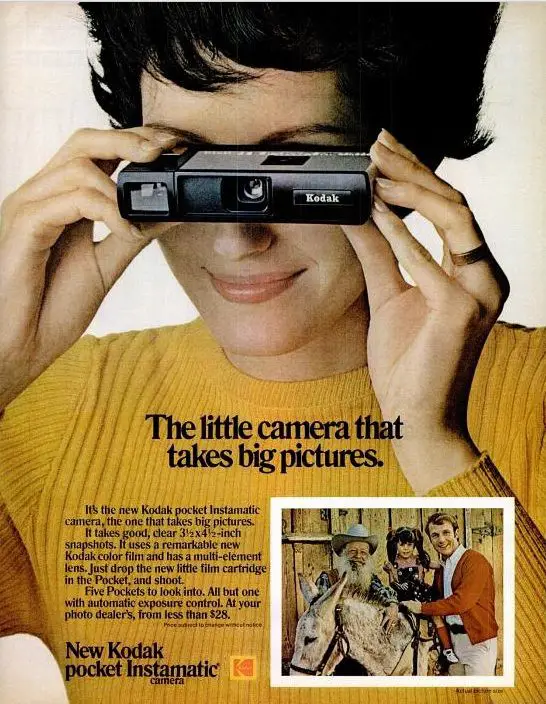Have you ever run out of film in the middle of a shoot and missed out on a precious moment? Knowing when you are out of film or how many shots you can still take are important skills to learn in film photography.
To know if your film camera is out of film, check the film exposure window that shows number of photos you have taken or shots you have left normally located either on the top, back, or the side of the camera. Additionally, the film lever or knob won’t turn, the film advances without resistance, or the shutter button doesn’t fire.
Depending on the camera, it may take some practice to know when you have or are about to run out of film. We will dive deeper into each camera system below and list the most common clues that you need to load a new roll of film.
35mm Cameras
35mm film cameras come in two general versions the SLR and rangefinder cameras (see this article for the difference between them ). While SLR film cameras are the more common of the two, both types are some of the easiest types of cameras to know when you have finished a roll of film due to the frame counter windows usually located on the top of the cameras. Nikon, Canon, Pentax, Leica, and Minolta are companies that make the most popular
). While SLR film cameras are the more common of the two, both types are some of the easiest types of cameras to know when you have finished a roll of film due to the frame counter windows usually located on the top of the cameras. Nikon, Canon, Pentax, Leica, and Minolta are companies that make the most popular
35mm Single Lens Reflex (SLR)
Most 35mm Single Reflex Lens (SLR) cameras comes with an exposure counter located near the film advance lever. It shows the number of frames you’ve taken with the current roll of film in the camera. The mechanical indicator to let you know your film is done for an SLR would be when you try to wind the film advance lever (or thumbwheel for newer film SLRs), it will not advance and will have some resistance. When this happens, do not try and force the film lever to advance as it may result in breaking the film from the canister spool.
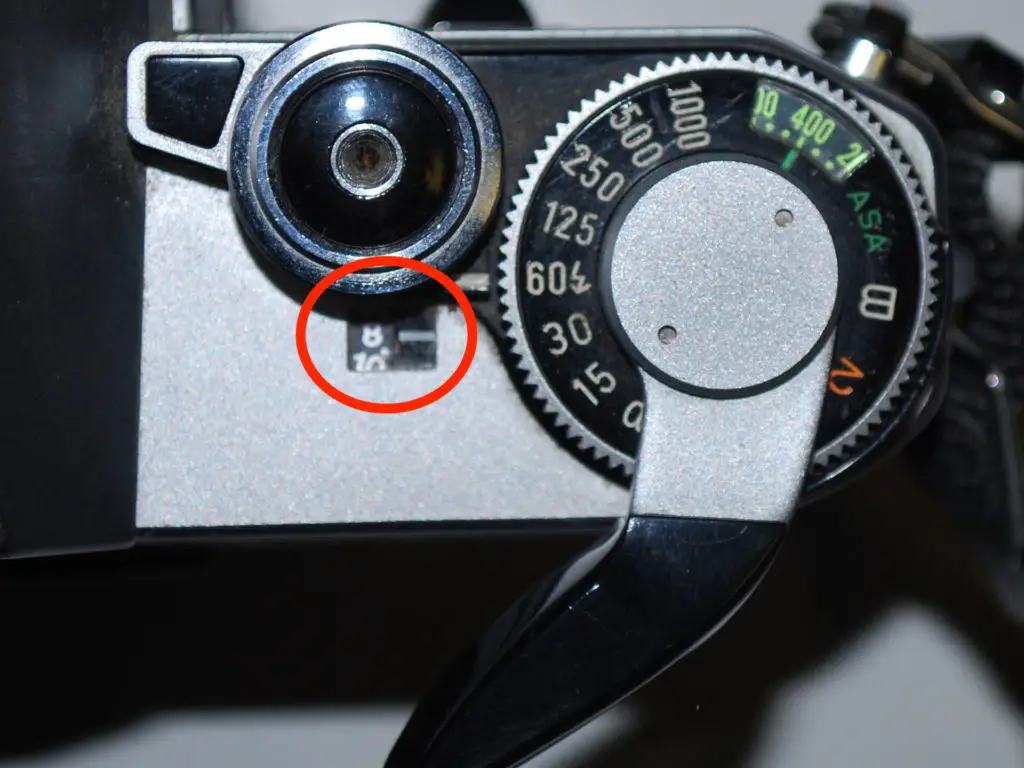
NOTE: On these cameras to know when your film is loaded correctly, the film winder knob (used to wind the film back into the film canister) will have resistance when you try to rotate it with film in the camera and it will rotate when you advance the film using the film advance lever.
35mm Rangefinders
35mm rangefinders camera, like 35mm SLRs, comes with similar visual and mechanical indicators as the 35mm SLR. Generally, there is an exposure counter on the top of the camera to tell you how many frames you have taken. The film advance lever will also does not let you wind it further when you reach the last frame of the roll. Some of the most popular 35mm rangefinder camera (and the most expensive ) are made by Leica.
) are made by Leica.
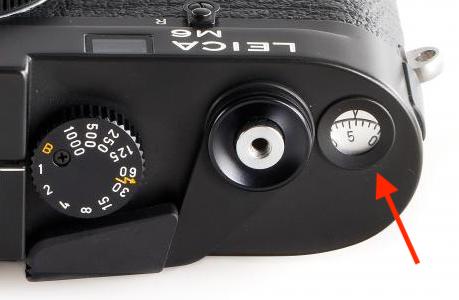
NOTE: Just like with SLR cameras, to know when your film is loaded correctly with 35mm rangefinder film cameras, the film winder knob (used to wind the film back into the film canister) will have resistance when you try to rotate it with film in the camera and it will rotate when you advance the film using the film advance lever.
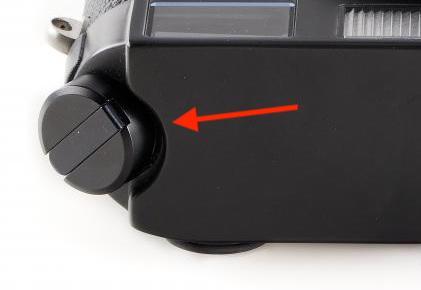
35mm Point & Shoot Cameras
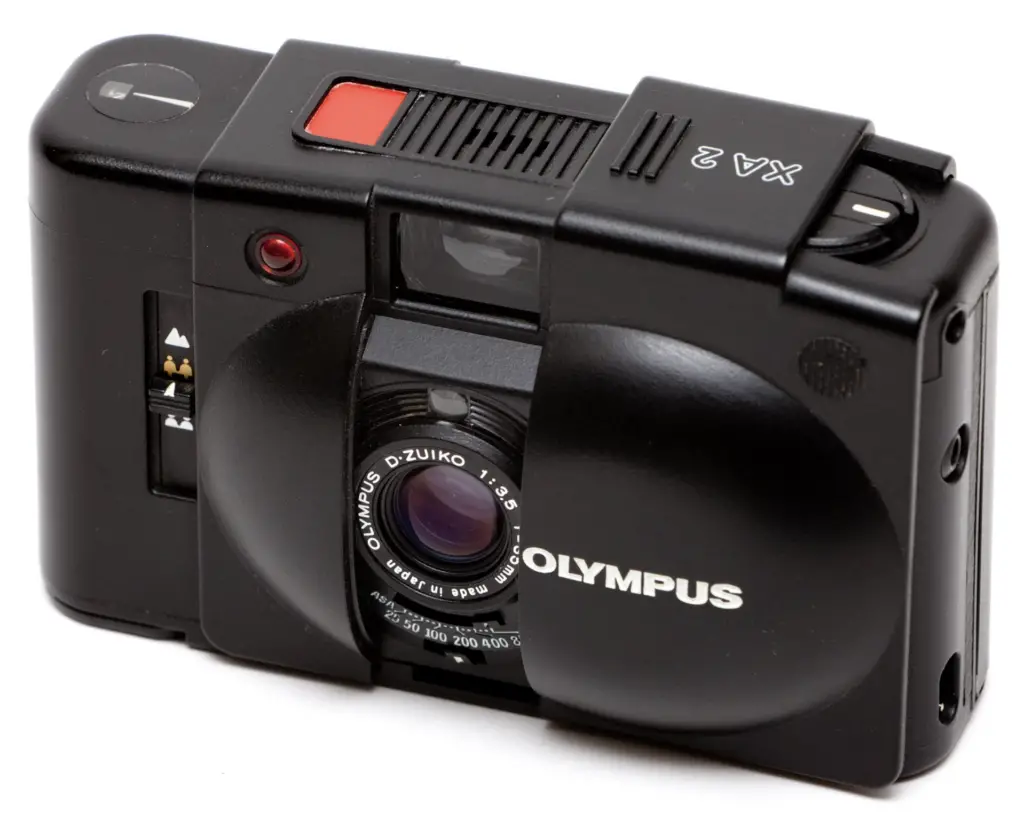
Like 35mm SLR and rangefinder cameras, 35mm Point & Shoot cameras have an exposure counter, either analog or digital, usually on the top of the camera to tell you how many frames you have taken from the current roll of film. Some of the most popular point & shoot cameras
have an exposure counter, either analog or digital, usually on the top of the camera to tell you how many frames you have taken from the current roll of film. Some of the most popular point & shoot cameras are made by companies like Olympus, Cannon, Contax, Nikon, Leica, and Pentax. For example, the Contax G series of cameras
are made by companies like Olympus, Cannon, Contax, Nikon, Leica, and Pentax. For example, the Contax G series of cameras have a Point and shoot cameras with digital exposure counters will show “0” or “E” when you run out of film. Also, if you are out of film the shutter button will not work when it is pressed.
have a Point and shoot cameras with digital exposure counters will show “0” or “E” when you run out of film. Also, if you are out of film the shutter button will not work when it is pressed.
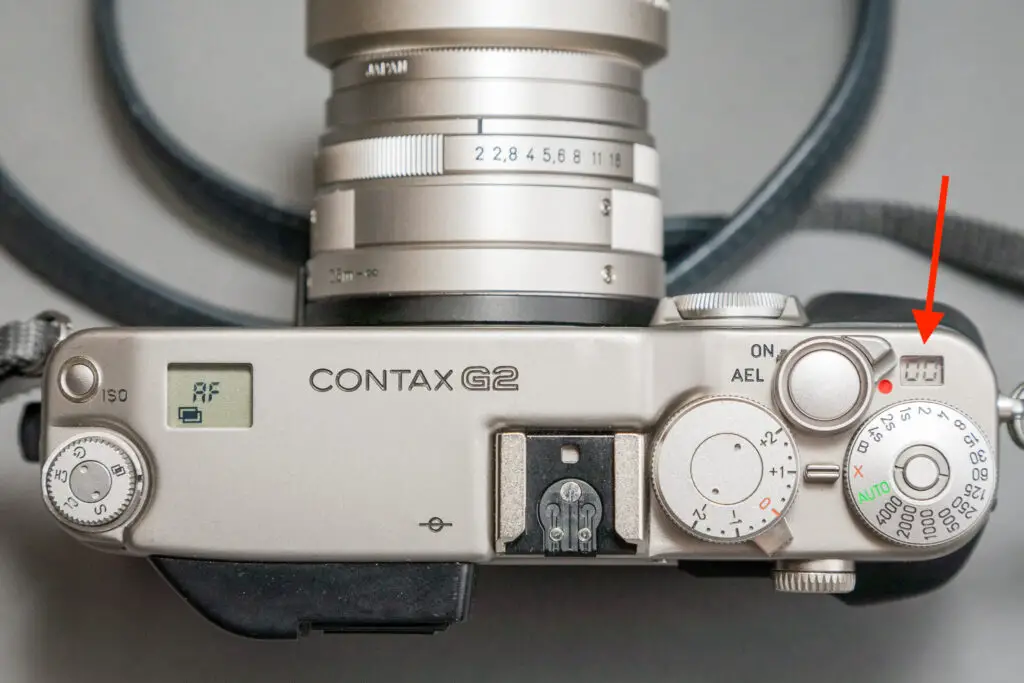
Some of the newer point-and-shoot film cameras are also equipped with LED indicators in the viewfinder to let you know when you’ve run out of film or how many images you have left. Some 35mm point and shoot cameras, like the Contax G series of cameras, will automatically rewind the film back into the canister when you have finished shooting a roll letting you know you are out of film with a audible winding noise. It will also blink “00” in the frame counter window to let you know the film has rewound and will do so until you open the film door.
Kodak and Ilford have recently started producing (along with Lomography) 35mm point & shoot cameras with plastic lenses and bodies to be a more environmentally-friendly version of a single-use camera . These fully mechanical cameras have no exposure meter (the batteries are only for the flash) and usually have a frame counter window on the top of the camera that counts down to “0” to let you know when you have finished a roll of film. The thumb wheel that advances the film in the camera also won’t advance the film once you reach the end of the film so you know it’s time to rewind the film back into the film canister inside the camera using the film rewind wheel and the film release button.
. These fully mechanical cameras have no exposure meter (the batteries are only for the flash) and usually have a frame counter window on the top of the camera that counts down to “0” to let you know when you have finished a roll of film. The thumb wheel that advances the film in the camera also won’t advance the film once you reach the end of the film so you know it’s time to rewind the film back into the film canister inside the camera using the film rewind wheel and the film release button.
NOTE: One of the most popular point and shoot cameras is the Olympus XA2 . Like 35mm rangefinder cameras, to know when your film is loaded correctly the film winder knob (used to wind the film back into the film canister) on the bottom of the camera will have resistance when you try to rotate it with film in the camera and it will rotate when you advance the film using the film advance knob on the back of the camera.
. Like 35mm rangefinder cameras, to know when your film is loaded correctly the film winder knob (used to wind the film back into the film canister) on the bottom of the camera will have resistance when you try to rotate it with film in the camera and it will rotate when you advance the film using the film advance knob on the back of the camera.
Disposable Cameras
Disposable film cameras operate similarly to Point & Shoot cameras
operate similarly to Point & Shoot cameras but they are made to only be used a single time (that’s they are called disposable or single-use cameras). The most popular disposable cameras
but they are made to only be used a single time (that’s they are called disposable or single-use cameras). The most popular disposable cameras are made by Kodak and Fujifilm but other companies like Ilford, Lomography, and Agfa also make them.
are made by Kodak and Fujifilm but other companies like Ilford, Lomography, and Agfa also make them.
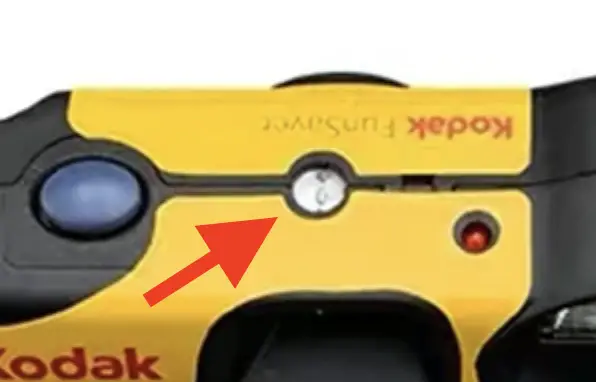
Disposable (or single-use) cameras come with an exposure counter on top of the camera to let you know how many shots you have taken and how many you have left. The frame counter window will indicate a “0”, where the film is done.
When you reach the end of the film roll on a disposable camera, the film advance thumbwheel on the back of the camera will continue to rotate but it won’t wind to the next frame. Also, the shutter button won’t make the “click” noise of firing the shutter.
Medium Format Cameras
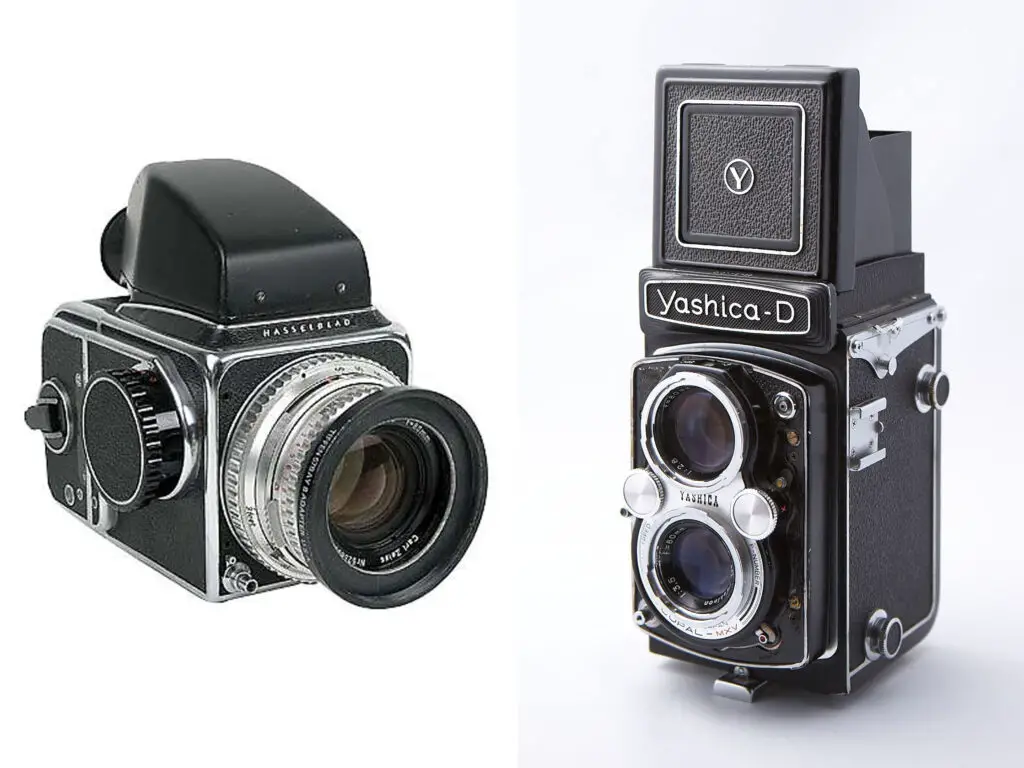
Medium format cameras have been around for a very long time and is still a beloved format by film photographers because it is more portable than large format cameras and offers more film resolution than 35mm film since the film is almost twice as large. Medium format also allows for photographers to shoot in a variety of image formats or aspect ratios with the most common ones being the 6 x 4.5, 6 x 6 square, 6 x 7, 6 x 9, and 6 x 17, depending on the camera. We will be discussing how to determine if you are out of film in the two most common types of Medium format cameras.
Twin Lens Reflex (TLR)
Twin Lens Reflex (TLR) cameras are distinguished by two vertical lenses on the front of the camera, its box-shaped design, and how the viewfinder is used by looking down through the top of the camera. There are several companies that make twin lens cameras made but Yashica, Mamiya, and Seagull are the most popular.
made but Yashica, Mamiya, and Seagull are the most popular.
Twin lens reflex cameras have an exposure counter usually found near the frame advance knob (or lever) to tell you how many frames you have already shot and how many exposures you have left. Other twin lens cameras a have a “red window” on the back of the camera that allows you to look into the film backing paper to see the current frame number.
The film advance lever (or knob) will not wind further than one frame if there are still available shots in your roll. If there is no more film, the frame advance lever will generally let you to wind the roll completely and in doing so store the length of your film on the take-up spool instead of winding the film back into the film canister like 35mm cameras.
Single Lens Reflex (SLR) Medium Format
The SLR Medium format are large modular cameras with a big lens on the front. They have similar portability of 35mm cameras but with much higher resolution and different aspect ratios like square (6 x 6) or rectangle (6 x 4.5 or 6 x 7). These cameras are distinctive for having changeable backs which allows you to swap out different film types like color and black & white film mid roll as well as digital backs and backs made for instant film
and backs made for instant film . The most popular version of this type of camera is made by Hasselblad (Hasselblad 500c) and Mamiya (RZ600) but there are other companies that made them as well.
. The most popular version of this type of camera is made by Hasselblad (Hasselblad 500c) and Mamiya (RZ600) but there are other companies that made them as well.
There is an exposure counter found on the back of the camera where the film is or near the film advancement lever or knob to tell you the frame count. Similar to the TLR cameras, the frame advance lever of the medium format SLR will allow you to wind the film into the take-up spool when you have shot the last frame.
NOTE: These type of cameras, similar to 35mm film cameras, will let you know when your film is loaded correctly the film winder knob (used to wind the film back into the film canister) on the film back of the camera will have resistance when you try to rotate it with film in the camera and it will rotate when you advance the film using the film advance knob on the side of the camera.
See this article, for how to know if your medium format film is used or unused .
.
Plastic Toy Point & Shoot Cameras
Plastic toy cameras are cameras mostly, if not all, made with plastic lenses and bodies and are valued for their imperfect images and inexpensive cost that provide a unique look to images. Random imperfections that arise from light leaks, plastic lenses, and the image format are what also inspired the smartphone app Instagram . Plastic cameras, like the Holga and Diana (and other cameras like the Lubitel), are similar to point & shoot cameras because you have little to no exposure control and generally one focal length. These camera types mostly use medium format film but there are plastic cameras that use 35mm as well (and some medium format cameras can also be retrofitted to use 35mm film using adapters).
. Plastic cameras, like the Holga and Diana (and other cameras like the Lubitel), are similar to point & shoot cameras because you have little to no exposure control and generally one focal length. These camera types mostly use medium format film but there are plastic cameras that use 35mm as well (and some medium format cameras can also be retrofitted to use 35mm film using adapters).
To tell when your plastic toy camera is out of film, generally the film advance knob will continue to turn with little resistance. Also with some of these cameras, like the Holga, the red exposure window on the back of the camera will say “0” or there won’t be any information at all.
Instant Cameras
Instant cameras are unique cameras that use special film with chemicals embedded into it to shoot an image that develops within a minute or two after the image is taken. Instax and Fujifilm are the top two companies that produce instant film and they are among the top companies that produce instant cameras
to shoot an image that develops within a minute or two after the image is taken. Instax and Fujifilm are the top two companies that produce instant film and they are among the top companies that produce instant cameras , including Lomography and Mint.
, including Lomography and Mint.
Fujifilm Instax Cameras

The Instax line of instant cameras made by Fujifilm are very popular and come in three different sizes: Mini, Square, and Wide and in analogue and hybrid camera types. Analogue Instax cameras, like the Instax SQ1, all generally have an image counter found at the lower right-hand side on the back of the camera or on the top. The exposure counter will show “0” when there is no more film in the cartridge and needs to be replaced. Your camera will also say “S” for Start when you have loaded film into the camera but still need to turn it on to eject the film dark slide from the film cartridge before you can take any images.
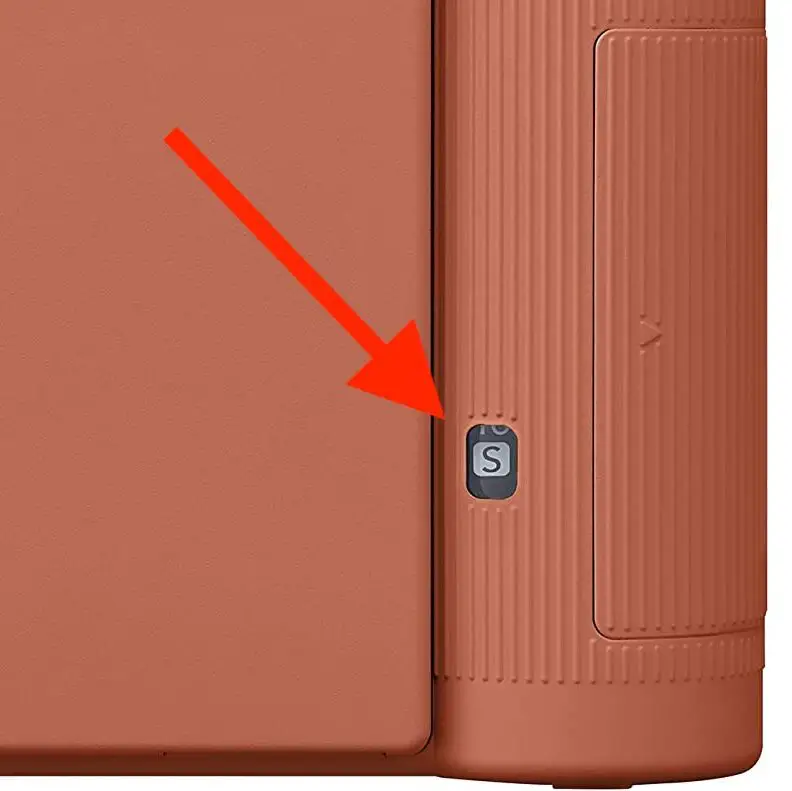
For Hybrid Instax cameras, like the Instax Mini Evo, the number of exposures are shown on a LCD screen on the back of the camera. For all instax camera types, the camera will not eject more film is if the camera is out of film .
.
For more information about all of the Instax cameras , see this article.
, see this article.
Polaroid
Polaroid is the another top instant camera film and camera manufacturer, which originally invented instant film in the 1940’s. Polaroid as a company stopped making instant film and instant cameras in the late 2000’s after filing for bankruptcy but was acquired by another company and starting making film and cameras again in late 2010’s and early 2020’s.
in the 1940’s. Polaroid as a company stopped making instant film and instant cameras in the late 2000’s after filing for bankruptcy but was acquired by another company and starting making film and cameras again in late 2010’s and early 2020’s.
Vintage Polaroid cameras, usually have the exposure counter on the back of the camera on the top right (like the Polaroid 600) or on the back of the camera on the bottom left (like the SX-70). The new Polaroid cameras, based on old Polaroid designs but updated with modern technology like the Polaroid Now+, usually have a digital exposure counter at the back of the camera normally near on the top right next to the power button to show how many film sheets are left. Once the exposure counter is at “0”, it means you are out of film and need a new film pack. For both Polaroid camera types, if the camera is out of film the camera will not eject more film when the shutter is pressed.
For more information about Polaroid Instant cameras, see this article .
.
APS cameras / Advantix
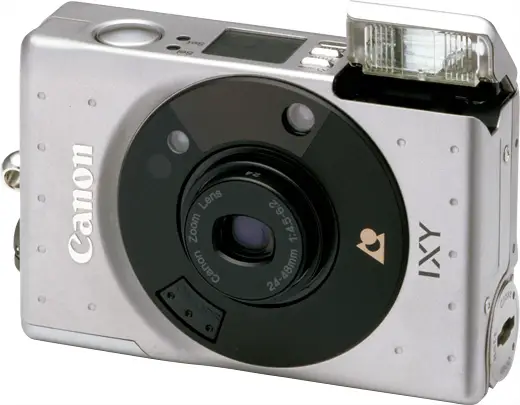
The Advanced Photo System (APS) format was introduced in 1996 (Kodak’s version was called Advantix) as an upgrade to 35mm film by making loading and unloading film into a camera automatic. APS cameras and film were widely adopted by amateur photographers but digital cameras overtook sales and interested declined so much that Kodak stopped making cameras in 2004. The final straw was when Kodak and Fujifilm stopped producing APS film entirely in 2011. The film itself is smaller and thinner than 35mm film (58% smaller), could hold up to 40 exposures, more scratch resistant, stronger than 35mm, and had a special film canister than made it easier to develop film. The film also recorded information about each image to help with film development such as the time, date, shutter speed, aspect ratio, and aperture.
APS cameras usually used a LCD on the back or top of the camera to show the exposure count. The exposure count would show “0” or “E” when you run out of film or accidentally loaded a roll of film that has already been used.
Some APS cameras automatically rewound the film back into the canister once it has been used completely. The rewinding sound is very audible and lets you know that it’s time for a new roll of film.
See this article, for how to know if your APS film is used or unused .
.
110 cameras
The 110 film format camera, popularly known as the “Pocket Instamatic”, was introduced in 1972. The film is very small at 16mm wide and the cameras are compact. The film is available in up to 24 frames with continuous backing paper and does not need to be rewound due to its unique plastic container. However, the film does have a few problems since it is so small. The negatives do not enlarge well and look grainy and out of focus but the small size kept people interested until Fujifilm stopped making the film in 2009. However, Lomography started to make the film format in 2011 and still offers many different options like color, black & white, color slide film, and others as well as 110 cameras. While most 110 cameras are just point & shoot cameras and novelty , there were a few 110 cameras produces that gave you more control over the exposure and were tiny SLR cameras like the Pentax 110 Auto (with interchangeable lenses)
, there were a few 110 cameras produces that gave you more control over the exposure and were tiny SLR cameras like the Pentax 110 Auto (with interchangeable lenses) and Minolta 110 Zoom SLR
and Minolta 110 Zoom SLR , and the tiny SLR Minolta 110 Zoom Mark II
, and the tiny SLR Minolta 110 Zoom Mark II .
.
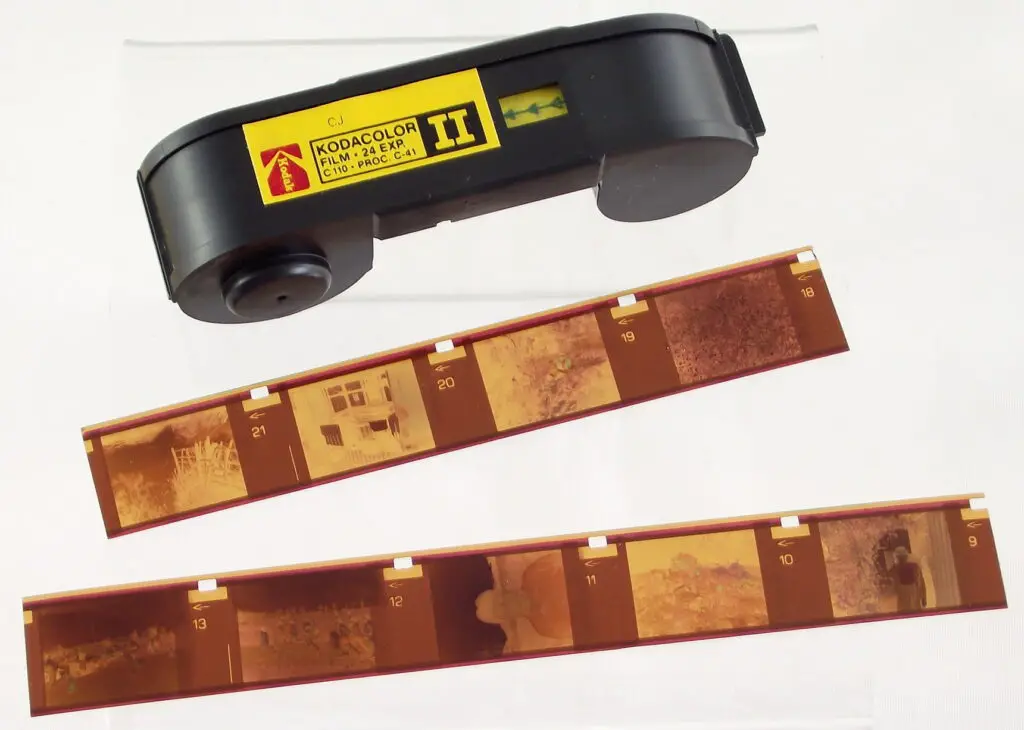

110 film has a frame counter built into the film canister which is visible thru a small window in the back of the camera. It will show you the current frame count or a black or white square if the roll is out of film. The film advance slider will also not slide to advance the film once it gets to the end of the roll of film.
For how to know if your 110 film is used or unused , see this article.
, see this article.
Where to Develop Your Film
Once your fIlm camera is out of film, if you aren’t using an instant film camera, you will need to develop the film yourself or have it developed in order to see the images. I recommend learning to develop black & white film at home to save money and having your color film developed by a lab by dropping it off at the store or sending it through the mail. I don’t recommend using Walmart, CVS, or Walgreens to develop your film because they will take up to 4 months to develop your film and you won’t get your negatives back. Instead, I recommend mailing your film to Dwayne’s Photo or The Darkroom . Also, see this guide for a list of film labs, what film they can develop, and how much each lab charges.
. Also, see this guide for a list of film labs, what film they can develop, and how much each lab charges.
Conclusion
Being familiar with the camera and film you are using is important in analog photography. Most film cameras will tell you when you are out of film visually usually with a frame counter (usually near the camera shutter or back of the camera) and usually mechanically by not being able to advance the film but where and how varies by the film format. It is important make it a habit to check your exposure counter during breaks in shooting to know how many shots you have left.

